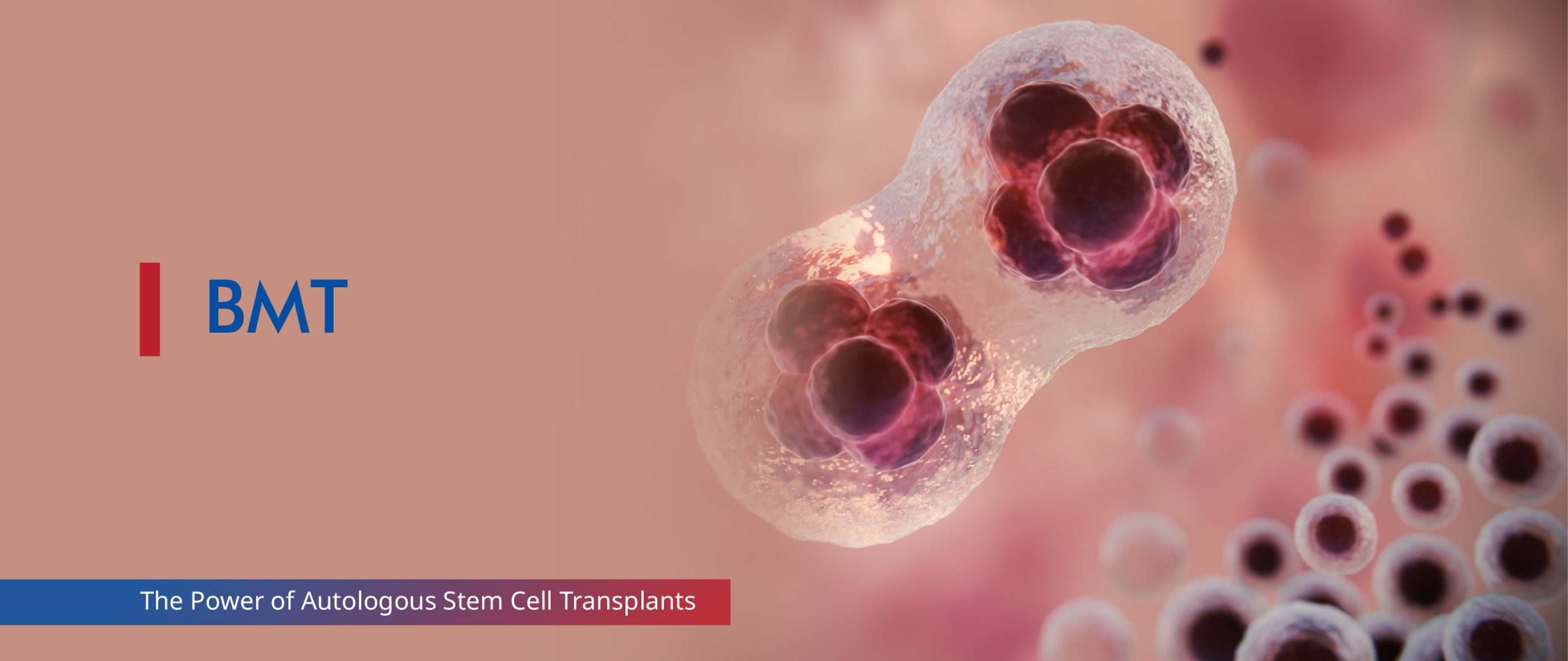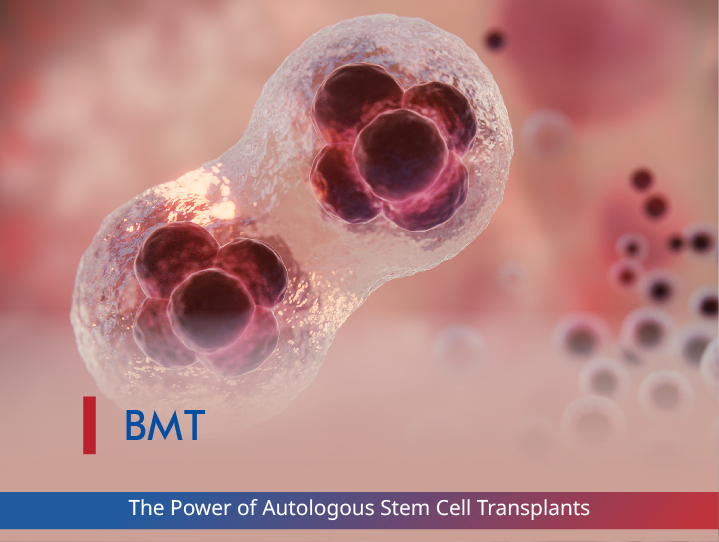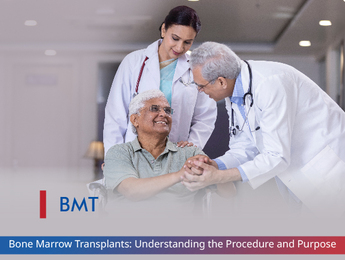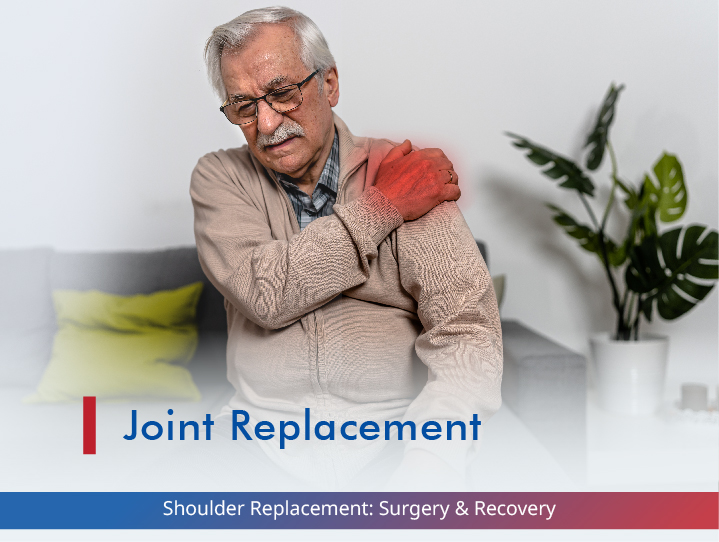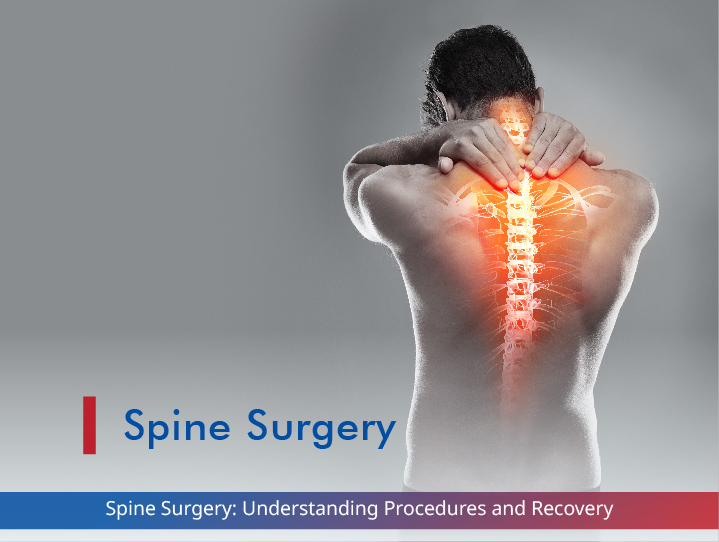Introduction
Autologous stem cell transplants (ASCT) have emerged as a powerful treatment option for various blood cancers and other conditions. This innovative procedure harnesses the body’s own healing potential by using a patient’s healthy stem cells to restore and regenerate damaged bone marrow. Let’s explore the intricacies of autologous stem cell transplants, their benefits, risks, and the recovery after autologous stem cell transplant.
What is an Autologous Stem Cell Transplant?
An autologous stem cell transplant, also called autologous bone marrow transplant, is a medical treatment procedure that uses a patient’s own healthy blood stem cells to replace damaged or compromised bone marrow. This treatment is primarily used for certain blood cancers and other disorders affecting the blood and immune system.
The process involves several steps
Step 1: collecting a patient’s healthy stem cells, typically from the bloodstream (peripheral blood stem cells) or occasionally from the bone marrow.
Step 2: These cells are then preserved while the patient undergoes high-dose chemotherapy or radiation therapy to eliminate cancer cells.
Step3: Following the treatment, the preserved stem cells are reinfused into the patient’s body, where they can regenerate healthy blood cells and restore normal bone marrow function.
Conditions Treated with Autologous Stem Cell Transplant
Doctors generally use ASCTs to treat various conditions, including:
- Multiple myeloma
- Hodgkin lymphoma
- Non-Hodgkin lymphoma
- Some types of leukaemia
- Germ cell tumours
- Certain autoimmune disorders
The Process of Autologous Stem Cell Transplant
The autologous stem cell transplant process typically involves several stages:
- Evaluation and Preparation: Patients undergo comprehensive testing to ensure they are eligible candidates for the procedure. Doctors may perform the following diagnostic tests:
- Blood tests, including CBCs, liver function tests, and renal function tests
- CT scan
- Electrocardiogram (EKG)
- Echocardiogram
- Biopsy
- Stem Cell Mobilisation: Doctors may administer certain medications to stimulate the generation and release of stem cells from the bone marrow into the bloodstream.
- Autologous Stem Cell Collection: The Doctor will perform autologous stem cell harvest from the patient’s blood through a process called apheresis or, less commonly, directly from the bone marrow.
- Stem Cell Processing and Storage: Collected stem cells are processed, frozen, and stored until needed.
- High-dose Chemotherapy: The patient receives intensive chemotherapy, sometimes combined with radiation therapy, to eliminate cancer cells and prepare the body for the transplant.
- Stem Cell Infusion: The preserved stem cells are thawed and reinfused into the patient’s bloodstream.
- Engraftment and Recovery: The transplanted stem cells begin to produce new blood cells, a process known as engraftment.
Benefits of Autologous Stem Cell Transplant
Autologous stem cell transplants offer several advantages:
- Reduced Risk of Rejection: Since the patient’s cells are used, there is no risk of graft rejection or graft-versus-host disease.
- Faster Recovery: Engraftment typically occurs more quickly than allogeneic transplants (using donor cells).
- Ability to Use Higher Doses of Chemotherapy: The stem cell rescue allows for more intensive cancer treatment.
- Potential for Long-term Remission: ASCT can lead to extended periods of cancer-free survival for some patients.
- No Need for a Donor: Eliminates the challenge of finding a compatible donor.
Risks of Autologous Stem Cell Transplant
While ASCT can be a life-saving procedure, it does come with potential risks:
- Infections: Patients are vulnerable to infections during the period of low blood cell counts.
- Organ Damage: High-dose chemotherapy can damage various organs.
- Secondary Cancers: There is a small chance of developing new cancers due to the intensive treatments.
- Infertility: The high-dose chemotherapy may affect fertility.
- Fatigue and Weakness: Patients often experience prolonged fatigue during recovery.
Recovery from an Autologous Stem Cell Transplant
Recovery after an autologous stem cell transplant is a gradual process that can take several months to a year or more. The initial phase of recovery focuses on managing side effects and preventing infections while waiting for the transplanted stem cells to engraft & begin producing new blood cells.
Key aspects of autologous bone marrow transplant recovery include:
- Close Medical Monitoring: Frequent check-ups and blood tests to track recovery progress.
- Infection Prevention: Patients must take precautions to avoid infections during the period of compromised immunity.
- Supportive Care: Management of side effects such as nausea, fatigue, and pain.
- Gradual Return to Normal Activities: Patients slowly resume daily activities as their strength improves.
- Long-term Follow-up: Regular check-ups to monitor for late effects or potential relapse.
Conclusion
Autologous stem cell transplants represent a powerful tool in the fight against blood cancers and other disorders. This procedure offers hope for patients who may have exhausted other treatment options by harnessing the body’s regenerative capabilities. While the process can be challenging, the potential for long-term remission and enhanced quality of life makes ASCT a valuable treatment option for many patients.
As medical science continues to advance, we expect further refinements and improvements in autologous stem cell transplant techniques, potentially expanding its applications and improving outcomes for patients worldwide.
FAQs
How does ASCT differ from an allogeneic stem cell transplant?
The main difference is the source of stem cells. In ASCT, the patient’s own stem cells are used, while allogeneic transplants use stem cells from a donor. ASCT has a lower risk of rejection and graft-versus-host disease but doesn’t benefit from the potential graft-versus-tumour effect seen in allogeneic transplants.
What are the success rates of ASCT?
Success rates vary and depend on the specific condition being treated, the patient’s overall health, and other factors. For some conditions, like multiple myeloma, ASCT can lead to long-term remission in many patients. However, discussing individual prognosis with a doctor is essential, as outcomes can vary widely between patients.

